How to Draw a Realistic Rose: A Step-by-Step Guide
Welcome to the beautiful world of floral art! Drawing a realistic rose can seem daunting at first, but with the right techniques and a bit of practice, you can create stunning representations that capture the essence of this beloved flower. In this guide, we'll take you through each step of the process, from understanding the anatomy of a rose to adding those final touches that make your artwork pop. Whether you're a beginner eager to learn or an experienced artist looking to refine your skills, this guide is designed to help you bloom into a master of rose drawing.
To draw a realistic rose, it's essential to understand its anatomy. Think of a rose like a puzzle; each piece plays a crucial role in the overall picture. A rose consists of several components, including:
- Petals: The soft, often vibrant parts that attract attention.
- Sepals: The green leaves that protect the bud before it blooms.
- Stem: The sturdy support that holds the flower upright.
By studying the structure of a rose, you can create accurate representations in your artwork. Pay attention to the way petals overlap, the texture of the sepals, and the curvature of the stem. This knowledge will serve as your foundation, guiding your hand as you bring your rose to life on paper.
Choosing the right materials is crucial for achieving the best results. You wouldn't bake a cake without the right ingredients, right? The same goes for drawing. Here’s a list of materials you should consider:
- Pencils: A range of pencils from H (hard) to B (soft) for different shading effects.
- Paper: Smooth or textured drawing paper to suit your technique.
- Coloring Mediums: Colored pencils, watercolors, or markers to add life to your drawing.
Having the right tools will not only enhance your drawing experience but also elevate the quality of your artwork. So, take a moment to gather your materials before diving into the drawing process!
Now that you have your materials ready, it's time to get started! Begin by sketching the basic shape of the rose. This is where you outline the flower's form, focusing on proportions and the overall structure. Imagine the rose as a series of circles and ovals that gradually come together to form the flower. Start with a small circle for the center, then add larger ovals for the outer petals. Remember, the key here is to keep it light; you can refine the details later. This initial sketch is like laying the groundwork for a house; it sets the stage for everything that follows.
Petals are the heart of a rose, and adding intricate details to them is where the magic happens. This is your chance to explore various techniques for creating texture and depth. Start by observing the unique curves and folds of the petals. Use gentle strokes to depict the softness of the petals, and don’t forget to incorporate shading to give them dimension. Think of the petals as delicate silk; they catch light and shadow in beautiful ways. The more you practice, the more you'll develop your own style and techniques for capturing the beauty of each bloom.
Leaves and stems add realism to your rose drawing. They are like the supporting cast in a movie; without them, the main character (the rose) wouldn’t shine as brightly. When drawing the stem, focus on its thickness and the way it bends. For the leaves, pay attention to their shape and texture. Each leaf has its own personality, with jagged edges and veins that tell a story. By incorporating these elements, you’ll create a more balanced and lifelike composition.
Shading is essential for creating depth in your drawing. Think of it as the seasoning that brings out the flavors in a dish. There are various shading techniques you can use, such as hatching, cross-hatching, and blending. Experiment with these methods to find what works best for your style. Remember, the goal is to create a sense of three-dimensionality that makes your rose look like it could bloom right off the page!
Color can bring your drawing to life. It’s like adding a splash of paint to a canvas; it transforms the ordinary into something extraordinary. Understanding color theory is crucial here. Consider the color wheel and how different colors interact. When applying color to your rose, start with lighter shades and gradually build up to darker tones. This layering technique adds richness and vibrancy to your artwork. Don’t be afraid to experiment with different color combinations to find the perfect palette for your rose.
The final touches can make a significant difference. This is where you refine your drawing, add highlights, and make adjustments to enhance the overall appearance of your rose. Take a step back and look at your work as a whole. Are there areas that need more definition? Do the colors blend well together? Small adjustments can elevate your drawing from good to stunning. Remember, art is subjective, so trust your instincts and let your creativity flow!
Even experienced artists make mistakes. It’s all part of the learning process! Here are some common pitfalls to watch out for:
- Overworking the Drawing: Sometimes less is more. Know when to stop!
- Ignoring Proportions: Keep an eye on the size and shape of each element.
- Rushing the Shading: Take your time to build depth gradually.
By being aware of these common mistakes, you can ensure a smoother drawing process and improve your skills over time.
Q: How long does it take to learn to draw a realistic rose?
A: It varies for everyone! With consistent practice, you can see improvement in a few weeks.
Q: Do I need expensive materials to draw a good rose?
A: Not at all! While quality materials can help, the most important thing is your technique and practice.
Q: Can I use digital tools to draw roses?
A: Absolutely! Digital drawing tools offer a wide range of possibilities and can be just as effective.
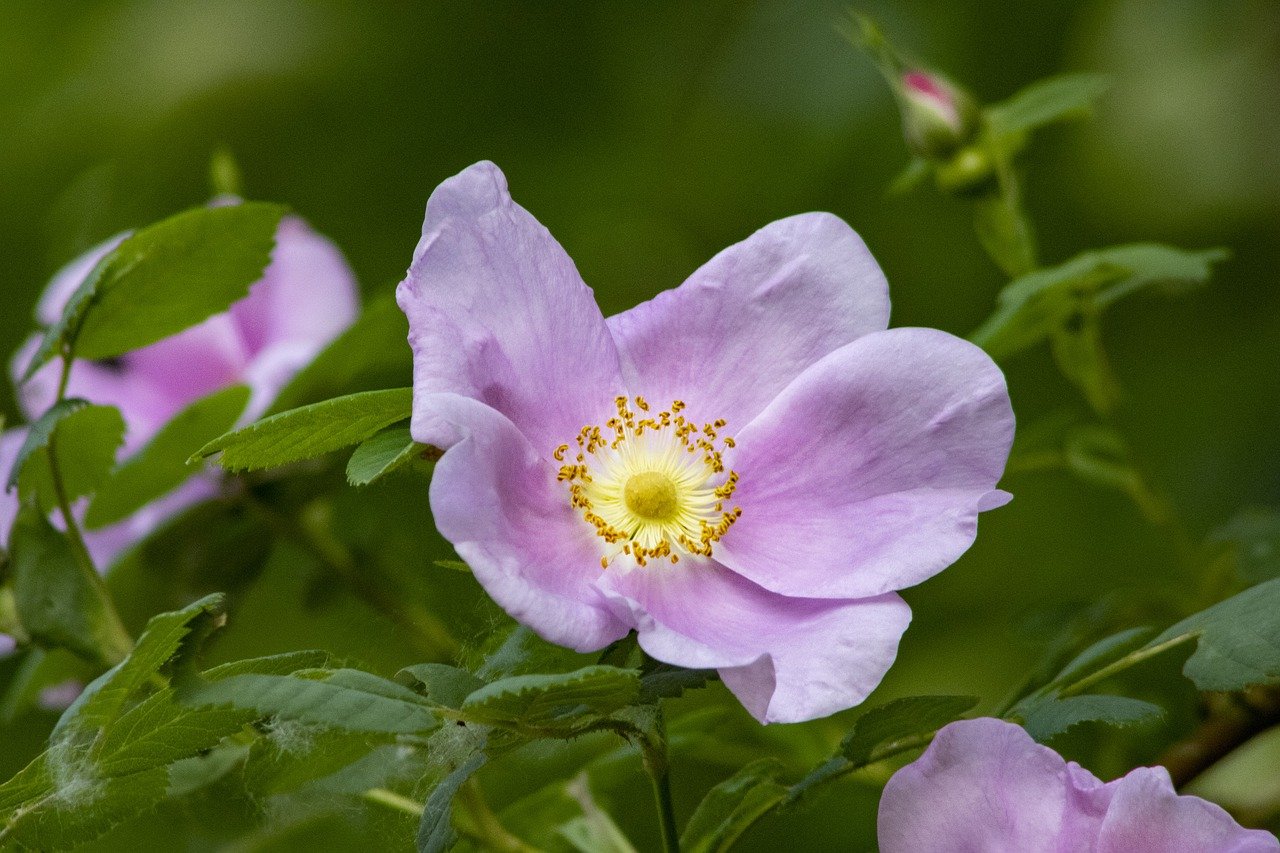
Understanding Rose Anatomy
To draw a realistic rose, it's essential to dive deep into its anatomy. Think of it as getting to know a new friend; the more you understand their quirks and features, the better your representation will be. A rose is not just a simple flower; it consists of several components that work together to create its stunning beauty. The main parts include:
- Petals: These are the colorful parts that catch the eye. Roses typically have multiple layers of petals, each with unique shapes and curves that contribute to their overall appearance.
- Sepals: Often overlooked, sepals are the green leaf-like structures that protect the flower bud before it blooms. They play a crucial role in the rose's development.
- Stem: The stem supports the flower and is often adorned with thorns. Understanding its structure is vital for creating a realistic representation.
- Leaves: The leaves add balance to the rose. Their shape and texture can vary significantly, influencing the overall look of your drawing.
When you start drawing, pay attention to how these elements interact. For instance, the petals overlap in a way that creates depth and dimension. Each petal has a unique curve, almost like a wave, that adds to the flower's lifelike quality. The sepals, while often green and less vibrant than the petals, provide a necessary contrast and help frame the flower itself.
Moreover, the stem isn't just a straight line; it has a natural curve and texture that should be captured in your drawing. Thorns can also be included, as they add an element of realism and authenticity. By understanding these components, you're not just drawing a flower; you're capturing the essence of a rose.
To illustrate the anatomy further, here's a simple table that breaks down the parts of a rose and their functions:
| Part | Description |
|---|---|
| Petals | The colorful, often fragrant parts that attract pollinators. |
| Sepals | Green structures that protect the flower bud before it blooms. |
| Stem | The main support structure that carries nutrients and water. |
| Leaves | Green parts that provide energy through photosynthesis. |
Understanding the anatomy of a rose allows you to appreciate its complexity and beauty. As you begin your drawing, keep these features in mind, and don't hesitate to refer back to this information. The more familiar you become with the rose's anatomy, the more lifelike your artwork will be. So grab your pencil and start observing these elements closely; your rose will thank you!
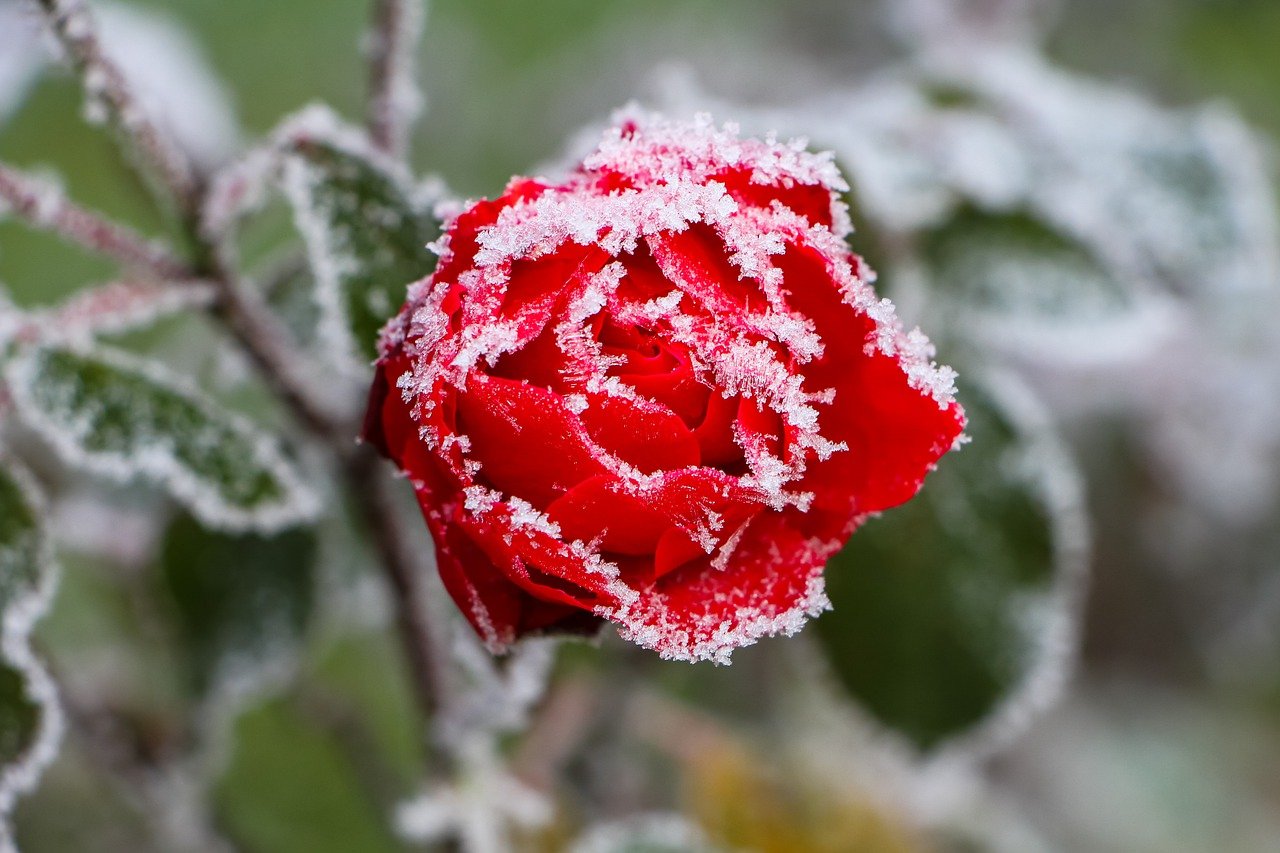
Gathering Your Materials
Before you embark on your artistic journey to draw a realistic rose, it’s crucial to gather the right materials. Think of this step as gathering your tools before a big adventure; having the right gear can make all the difference! You don’t want to find yourself halfway through your drawing and realize you’re missing something essential.
First and foremost, you'll need a good set of pencils. A range from HB to 6B is ideal, as it allows you to create both light sketches and deep shadows. The HB pencil is perfect for initial outlines, while the softer pencils, like 4B and 6B, are great for adding depth and texture.
Next, consider the type of paper you'll use. A smooth, heavy-weight paper is best for pencil drawings. It should be thick enough to handle multiple layers of shading without warping. If you plan to add color later, look for a mixed media paper that can accommodate both pencil and watercolor or colored pencils.
Now, let’s talk about erasers. A good kneaded eraser is a must-have. This type of eraser allows you to lift graphite without damaging the paper, making it perfect for fine-tuning your details. You might also want a plastic eraser for more stubborn marks.
When it comes to coloring your rose, consider using colored pencils or watercolors. Each medium has its unique qualities. Colored pencils are excellent for detailed work and layering, while watercolors can create a soft, ethereal effect. If you choose colored pencils, make sure they are of good quality, as this will greatly impact the vibrancy of your colors.
Lastly, don’t forget about a few additional tools that can enhance your drawing experience:
- Blending stumps: These are great for smoothing out pencil marks and creating a more realistic texture.
- Sharpener: A reliable sharpener will ensure your pencils are always ready for fine details.
- Ruler: A ruler can help you keep your proportions in check, especially when sketching the initial outline.
All in all, gathering your materials is like preparing for a journey. Each item plays a role in bringing your artistic vision to life. So, take your time to select the best tools that resonate with your style and comfort. With everything in hand, you’ll be ready to dive into the beautiful world of rose drawing!

Sketching the Basic Shape
When it comes to drawing a realistic rose, the first step is to sketch the basic shape. This is where the magic begins, and trust me, it's easier than it sounds! Start by visualizing the rose in your mind. Imagine the overall structure, how the petals curl, and how they overlap. The rose is not just a random arrangement of petals; it has a unique, elegant form that you need to capture. Grab your pencil and paper, and let’s dive into the process!
Begin with a light hand. Use simple shapes to outline the rose's structure. You can start with a small circle for the center of the rose, which represents the bud. This circle will serve as the focal point, guiding the rest of your drawing. From there, draw a few curved lines extending outwards. These lines will represent the outer petals, giving you a basic idea of the size and shape of the bloom. Think of these lines as the framework of a house; they provide the support for the entire structure.
Next, it’s time to add the petals. Roses typically have multiple layers of petals, so don’t hesitate to create overlapping shapes. Each petal should have a gentle curve, resembling the soft waves of the ocean. Pay attention to how the petals wrap around each other; they often create a beautiful, cascading effect. Here’s a little tip: the outer petals are usually larger and more open, while the inner petals are smaller and tightly curled. This contrast adds depth and realism to your drawing.
As you sketch, keep your pencil strokes light and fluid. You don’t want to press too hard at this stage because you’ll likely make adjustments as you go. If you find that your initial shapes aren’t quite right, don’t hesitate to erase and refine them. Think of this as sculpting; you’re chiseling away at a block of marble to reveal the stunning rose hidden inside. It’s all about patience and practice!
Once you’re satisfied with the general outline, it's time to focus on proportions. A realistic rose should have a balanced look, so take a step back and assess your drawing. Are the petals evenly spaced? Does the overall shape feel harmonious? If something looks off, trust your instincts and make the necessary adjustments. Remember, even the most skilled artists constantly refine their work.
Now, let’s talk about the stem and leaves. While they may not be the main focus, they play a crucial role in the overall composition of your rose. Draw a straight line down from the base of the flower to represent the stem. This line should be slightly thicker than the lines used for the petals, as the stem is more robust. To add realism, sketch a couple of leaves emerging from the stem. These leaves should have a pointed shape and a slight curve, mimicking the natural growth of a rose plant.
In summary, sketching the basic shape of a rose is all about observation and practice. Keep your lines light, focus on proportions, and don’t be afraid to make adjustments. With each stroke, you’re one step closer to creating a stunning representation of this beautiful flower. So, grab that pencil and let your creativity flow!
- What should I do if my rose doesn't look realistic? Don't worry! Keep practicing and use reference images to guide your proportions and shapes.
- How can I improve my sketching skills? Regular practice is key. Try sketching different flowers and study their shapes.
- Do I need special paper to draw a rose? While any paper will do, using smooth drawing paper can help your pencil glide more easily.
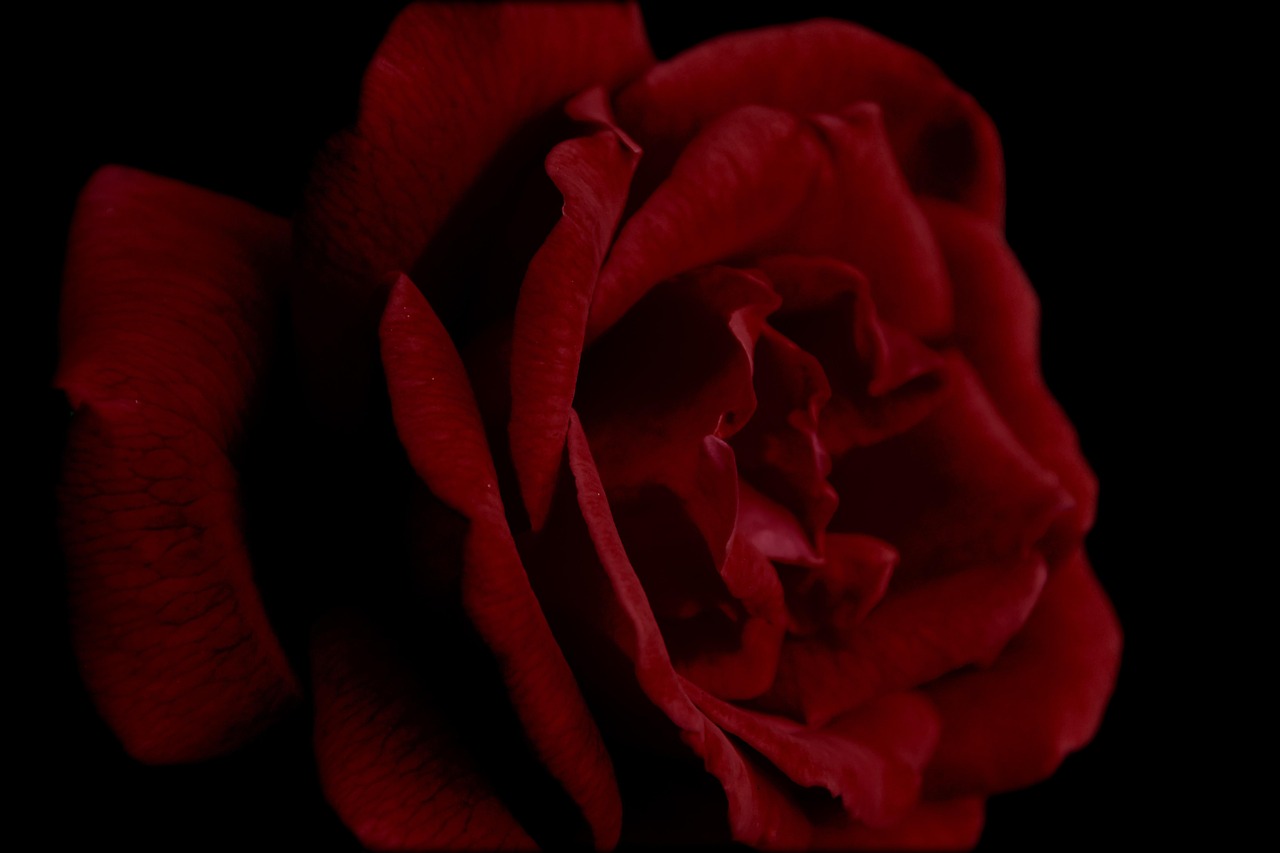
Adding Petal Details
When it comes to drawing a rose, the petals are the true stars of the show. They are not just simple shapes but intricate, delicate structures that demand attention. To truly capture the essence of a rose, you need to focus on the curves, textures, and shading that bring these petals to life. Start by observing real roses or high-quality images to understand how the petals overlap and flow. This observation will give you insights into how to replicate that beauty on paper.
Begin by sketching the outlines of each petal. Remember, no two petals are identical. Some may be slightly curled, while others might be more open. Use light pencil strokes to create the basic shapes, allowing for adjustments as you go. Once you have the outlines, it’s time to add details. Pay close attention to the edges of each petal; they often have a soft, wavy appearance. You can achieve this by gently varying the thickness of your lines, using a finer pencil for the delicate edges.
Shading is where the magic happens. It adds depth and dimension to your petals, making them appear more lifelike. Consider the light source in your drawing. Typically, the light will hit the petals from one direction, creating shadows on the opposite side. Use a combination of hatching and cross-hatching techniques to build up the shadows gradually. Start with lighter shades and slowly work your way to darker tones, blending as you go to create a smooth transition. This technique will help your petals look soft and velvety, just like the real thing.
Another important aspect of petal detailing is the texture. Roses have a unique surface that can be captured through subtle lines and shading. To create this effect, consider using a blending tool or your finger to smudge the pencil lines slightly, giving a more natural look. You can also add tiny lines to represent the veins on the petals, which can be done with a sharpened pencil or a fine-tipped pen. These veins should be faint but noticeable, adding to the realism of your drawing.
Finally, don’t forget about the color! If you’re using colored pencils or watercolors, start with a light wash of color and build up to richer tones. Layering is key here; it allows you to create depth and complexity in the color of each petal. Consider using a mix of shades that reflect the natural variations found in rose petals, such as soft pinks, deep reds, or even whites with hints of yellow. The more you layer, the more vibrant your rose will become, making it a true centerpiece of your artwork.
In summary, adding petal details is all about observation, technique, and a dash of creativity. Embrace the intricacies of each petal, and don’t be afraid to experiment with different shading and coloring methods. With practice, you’ll find your unique style and approach to drawing roses, making each piece a stunning representation of this beautiful flower.
- What type of pencil is best for drawing rose petals? A range of pencils from HB to 6B is recommended, as they allow for both fine details and rich shading.
- How can I make my rose petals look more realistic? Focus on the curves, shading, and texture of the petals. Use reference images to guide your detailing process.
- Is it necessary to use color in my rose drawing? While color can enhance your drawing, creating a black-and-white sketch with detailed shading can also be quite striking.

Incorporating Leaves and Stems
When it comes to drawing a realistic rose, the leaves and stems are not just optional additions; they are essential elements that enhance the overall composition and authenticity of your artwork. Think of the rose as a beautiful melody, with its petals being the notes that sing, while the leaves and stems provide the harmony that holds everything together. Without these supporting components, your rose might look incomplete or unbalanced. So, let's dive into the intricacies of sketching these vital parts!
First, consider the shape of the leaves. Rose leaves typically have a serrated edge and come in various shapes, depending on the variety of the rose. When drawing the leaves, start with a simple outline, capturing their general form. Pay attention to how the leaves connect to the stem; this is where you can add a touch of realism. A well-drawn leaf should have a natural flow, almost as if it’s gently swaying in the breeze.
Next, let’s talk about texture. The surface of a rose leaf is not smooth; it has a certain texture that can be conveyed through careful shading and line work. Use short, quick strokes to mimic the veins and the subtle imperfections that give the leaves their character. Remember, the more detail you add, the more lifelike your drawing will appear. You might find it helpful to reference real leaves or photographs to observe how light interacts with their surfaces.
The stem is equally important, serving as the backbone of your rose. It should be drawn with a sense of strength, as it supports the weight of the flower. Start by sketching a straight line for the stem, then gradually add thickness, tapering it towards the base. Don’t forget to include the thorns! These little details can add a lot of personality to your drawing. Thorns are not just for aesthetics; they tell a story about the rose’s resilience. Make sure they are proportionate to the stem and positioned naturally.
As you incorporate these elements, consider how they interact with the petals. A well-placed leaf can draw the viewer’s eye towards the flower, creating a sense of balance. You might even want to experiment with different angles and positions to see what looks best. For instance, a leaf that overlaps a petal can create depth, making your drawing more dynamic.
In summary, incorporating leaves and stems into your rose drawing is crucial for achieving realism. They provide context, support, and a sense of completeness to your artwork. Take your time with these elements, and don’t hesitate to erase and adjust as needed. Remember, every stroke is a step closer to creating a stunning piece of floral art!
- What type of paper is best for drawing roses?
Using a smooth, heavyweight paper will allow for better blending and shading, giving your rose a more realistic appearance. - Should I draw leaves before or after the rose?
It’s often easier to sketch the rose first, then add the leaves and stems, allowing for adjustments in positioning. - How can I make my leaves look more realistic?
Focus on the texture and shading; using reference images can help you understand the details better.

Shading Techniques for Depth
Shading is an incredibly essential technique in drawing that can transform a flat image into a stunningly realistic piece of art. When it comes to drawing a rose, mastering shading techniques is crucial to achieving the depth and dimension that makes your flower come alive on the page. Think of shading as the magic wand that brings your drawing from a simple outline to a three-dimensional bloom. So, how do we get started?
First, it’s important to understand the basic principles of light and shadow. Light creates highlights where it hits the surface of the petals, while shadows fall in areas that are less exposed. To effectively represent these variations, consider the light source in your drawing. Is it coming from the left, right, or above? This will dictate where your highlights and shadows should be placed.
One effective shading technique is called hatching, where you create parallel lines to indicate shadow. The closer the lines are to each other, the darker the area will appear. For instance, when shading the inner petals of the rose, you might use closely spaced lines to create a rich, deep shadow, while using more spaced lines on the outer petals for a softer look. This technique adds a sense of texture and depth that is essential for realism.
Another technique to consider is blending. After applying your initial hatching, you can use a blending stump or even your finger to gently smudge the lines. This softens the edges and creates a smoother transition between light and shadow. Blending is particularly effective for the delicate petals of a rose, where you want the transitions to be subtle and soft, just like the flower itself.
For those who prefer a more dramatic effect, cross-hatching can be a powerful tool. This technique involves layering lines in different directions, which can create a rich texture and depth. By varying the pressure on your pencil, you can achieve different shades, allowing for a more dynamic look. For example, when shading the outer petals of your rose, cross-hatching can give the illusion of the petals curling and folding, enhancing the overall three-dimensional effect.
In addition to these techniques, consider using a gradient approach to shading. This involves gradually transitioning from dark to light shades, which can be particularly effective in areas where the light hits the petals most directly. By carefully layering your pencil strokes, you can create a soft gradient that mimics the natural beauty of a rose.
Lastly, don't forget about the background! Adding shadows behind the rose can help ground your flower and make it pop off the page. A simple shadow beneath the rose can suggest that it is resting on a surface, making your drawing feel more complete and realistic.
In conclusion, mastering shading techniques is a vital part of drawing a realistic rose. By understanding light and shadow, and practicing techniques like hatching, blending, cross-hatching, and gradient shading, you can create a drawing that not only looks realistic but also captures the essence of beauty that roses are known for. So grab your pencils, and let your creativity flow!
- What materials do I need for shading? You will need quality pencils (preferably ranging from H to B), blending stumps, and good quality paper to achieve the best results.
- Can I use colored pencils for shading? Absolutely! Colored pencils can add a beautiful dimension to your rose, especially when blending colors for highlights and shadows.
- How do I fix mistakes in shading? If you make a mistake, don’t panic! You can lightly erase the area and reapply your shading, or use a blending stump to soften the lines.
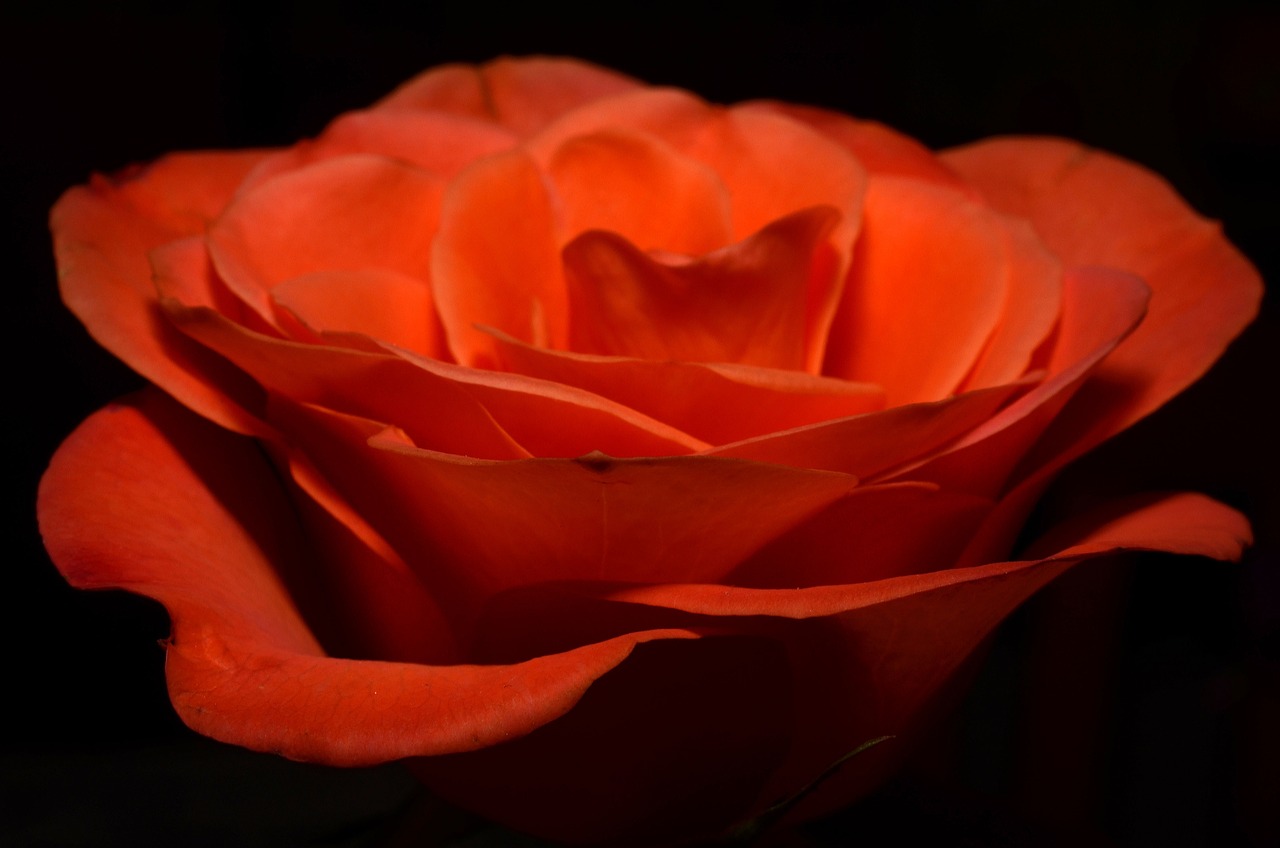
Coloring Your Rose
Coloring your rose is where the magic truly happens! It’s like adding the final brush strokes to a masterpiece, transforming a simple sketch into a vibrant floral work of art. But before you dive into the world of colors, let’s take a moment to understand a few essential principles of color theory that will guide your choices.
First and foremost, consider the color wheel. Familiarizing yourself with this tool can help you select complementary colors that enhance your rose's beauty. For instance, using shades of green for the leaves and stem can create a stunning contrast against the reds, pinks, or yellows of your rose. Here’s a simple breakdown of color relationships:
| Color Relationship | Description |
|---|---|
| Complementary Colors | Colors that are opposite each other on the color wheel, such as red and green, which can create vibrant contrasts. |
| Analogous Colors | Colors that are next to each other on the wheel, like red, red-orange, and orange, which can create harmonious blends. |
| Monochromatic Colors | Different shades and tints of the same color, providing a cohesive look. |
Next, let's talk about how to apply color. There are various techniques you can use, depending on the medium you're working with. If you’re using colored pencils, layering is key. Start with lighter shades and gradually build up to darker tones, blending them smoothly to create depth. For watercolor, remember that less is often more; start with a wash of color and gradually add more layers for intensity.
Another important aspect is to think about the lighting. The way light interacts with your rose will influence how you color it. Areas that catch the light should be brighter, while the shaded parts can be darker. This contrast will give your rose a three-dimensional appearance, making it pop off the page.
Don’t forget to add highlights! A touch of white or a lighter shade of your primary color can simulate the glistening dew on the petals, adding a realistic touch. Similarly, using a dark pencil or a fine-tip pen can help you define the edges and details, making your rose look even more lifelike.
Lastly, it’s essential to experiment and have fun with your colors! Don’t be afraid to try unconventional shades. A blue rose might not be common, but it can certainly stand out and showcase your creativity. Remember, art is about expression, so let your personality shine through your coloring choices!
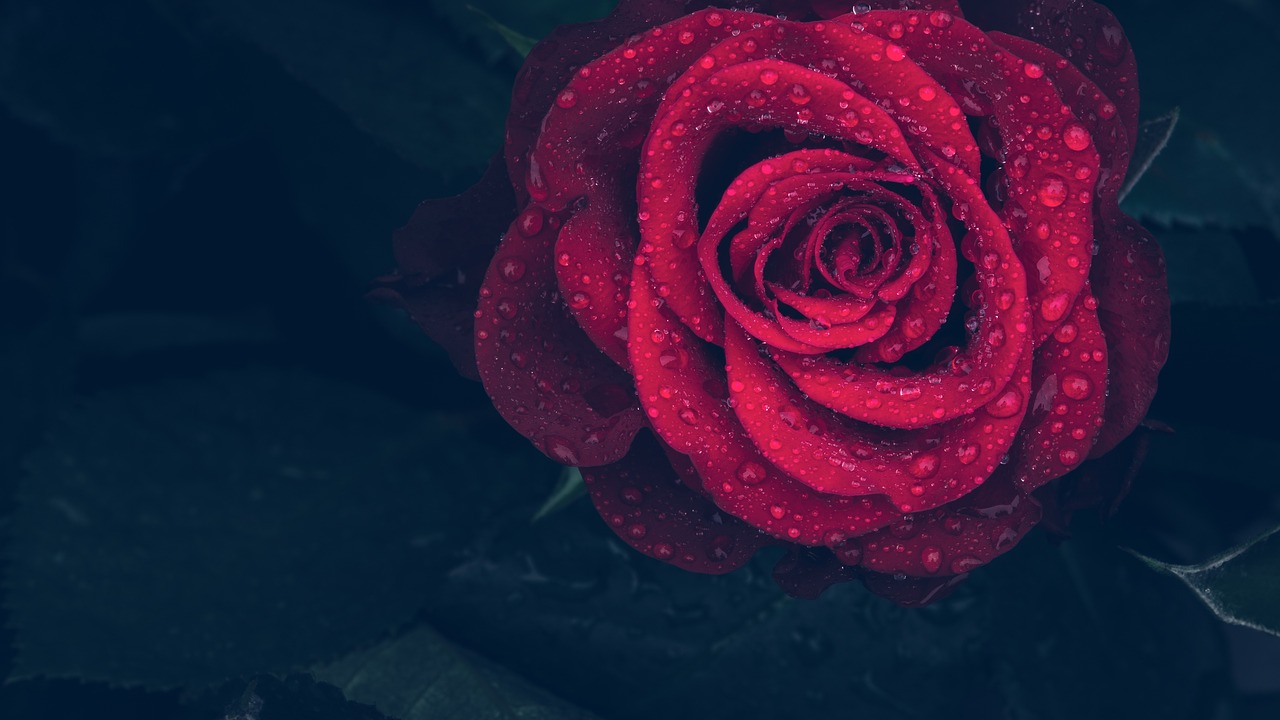
Final Touches and Details
As you approach the end of your rose drawing, the final touches can transform your artwork from good to stunning. Think of this stage as the icing on the cake; it’s where all your hard work comes together to create a beautiful masterpiece. First, take a step back and assess your drawing. Are there areas that need more definition? Do the petals have enough texture? This is your chance to refine those details.
One of the most effective ways to enhance your drawing is to add highlights. Using a white pencil or a gel pen, you can create subtle highlights on the petals. Imagine how the light catches the dew on a fresh bloom; replicating that effect will add a touch of realism. Focus on the edges of the petals where the light naturally hits, and don’t be afraid to experiment with the intensity of your highlights.
Additionally, consider the background of your rose. A well-chosen background can make your flower pop. You might want to softly shade the area surrounding the rose with a light color to create a sense of depth. Alternatively, you could add a simple gradient or a blurred effect to draw attention to the flower itself. Remember, the background should complement the rose, not compete with it.
Another important aspect is to ensure the stems and leaves are well-integrated with the flower. You can add more details to the leaves, such as veins and texture, which will help them stand out while still harmonizing with the overall composition. Use darker shades for the veins to create contrast and depth.
Finally, don’t forget to step away from your work occasionally. Taking a break allows you to return with fresh eyes, making it easier to spot areas that require adjustments. Sometimes, the smallest changes can have the biggest impact. Whether it’s adding a bit more shading or adjusting the highlights, these details can elevate your drawing significantly.
- How do I know when my drawing is finished? Trust your instincts! If you feel like something is missing, it probably is. Keep refining until it feels complete.
- Can I use colored pencils for highlights? Absolutely! White colored pencils or gel pens work wonders for highlights on colored drawings.
- What if I make a mistake? Don’t worry! Mistakes are part of the process. You can often fix them with shading or by adjusting the surrounding areas.
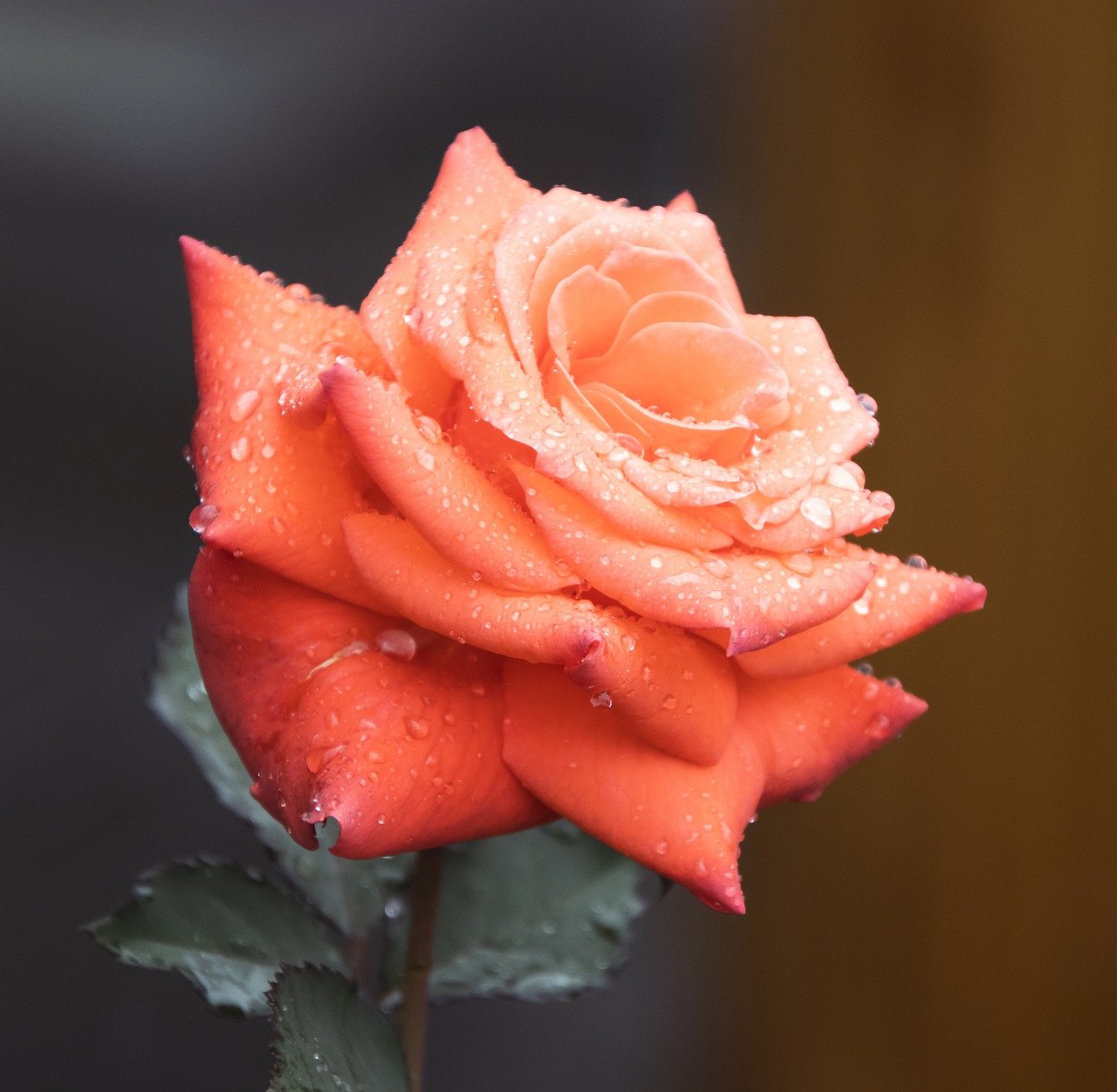
Common Mistakes to Avoid
When it comes to drawing a realistic rose, even seasoned artists can stumble upon a few common pitfalls that can derail their progress. One of the most frequent mistakes is neglecting the anatomy of the rose. Understanding the structure of the flower is crucial for creating a lifelike representation. Without this knowledge, your rose may end up looking flat or unrealistic. Take the time to study the shape and arrangement of the petals, sepals, and leaves. You wouldn’t build a house without a blueprint, right? The same principle applies to your artwork.
Another common error is rushing through the initial sketch. Many artists get excited and jump straight into detailing without laying a solid foundation. This can lead to skewed proportions and awkward angles. Make sure to spend ample time on the basic shape, focusing on getting the proportions just right. Think of it like sculpting: you wouldn’t start carving without first shaping the clay, would you?
In addition, many artists overlook the importance of shading. Shading is what gives your rose depth and dimension, transforming a simple drawing into something truly captivating. A common mistake is using a single shade throughout the petals. Instead, incorporate a variety of tones to depict the light and shadow effectively. Remember, roses are not just one color; they have layers and subtleties that need to be captured. To help illustrate this, consider using a table to compare different shading techniques:
| Shading Technique | Description | Best Used For |
|---|---|---|
| Hatching | Lines drawn in one direction to create texture. | Creating light shadows on petals. |
| Cross-Hatching | Intersecting lines to build darker areas. | Adding depth to the center of the rose. |
| Blending | Smoothing out pencil marks for a soft look. | Creating realistic gradients on petals. |
Furthermore, when coloring your rose, a common mistake is to use colors that are too vibrant or unrealistic. While it’s tempting to go for bold hues, remember that nature has its own palette. Study the colors of real roses and try to replicate them. Mixing colors can also enhance realism; for example, adding a touch of yellow to red can create a more lifelike shade.
Lastly, don’t forget to step back and evaluate your work periodically. Many artists become so engrossed in the details that they lose sight of the overall composition. Taking breaks allows you to see your drawing with fresh eyes, making it easier to spot inconsistencies or areas that need improvement. Remember, art is a journey, not a race!
Q: What is the best pencil to use for drawing roses?
A: A range of pencils from 2H to 6B is ideal. Start with harder pencils for light sketches and use softer pencils for shading.
Q: How can I make my rose look more realistic?
A: Focus on the details of the petals, incorporate shading, and pay attention to the colors you choose. Studying real roses can also help immensely.
Q: Is it necessary to use colored pencils, or can I stick to graphite?
A: While colored pencils can enhance your rose, graphite can also create stunning monochromatic artwork. It's all about your personal preference!
Frequently Asked Questions
- What materials do I need to draw a realistic rose?
To create a stunning rose drawing, you'll need a few essential materials. Start with high-quality sketching pencils (like HB and 2B), erasers, and smooth drawing paper. If you plan to add color, consider colored pencils or watercolors. A blending stump can help you achieve smooth shading, while fine-tipped pens are great for adding intricate details.
- How can I understand the anatomy of a rose for drawing?
Understanding the anatomy of a rose is key to drawing it realistically. Take a moment to observe real roses or reference images. Notice the arrangement of petals, the shape of the sepals, and the structure of the stem. Think of the rose as a three-dimensional object with layers and curves, which will help you capture its beauty on paper.
- What are some common mistakes to avoid when drawing roses?
Even seasoned artists can stumble when drawing roses! One common mistake is neglecting the proportions of the petals, which can lead to an unrealistic look. Another pitfall is over-shading, which can flatten your drawing instead of adding depth. Always take your time to observe and adjust as you go, ensuring each detail contributes to the overall composition.
- How do I add depth to my rose drawing?
Shading is your best friend when it comes to adding depth! Use various techniques like hatching, cross-hatching, and blending to create shadows and highlights. Think of light hitting the rose from a specific angle and shade accordingly. This will give your drawing a more lifelike appearance, making it pop off the page.
- Can I use digital tools to draw a rose?
Absolutely! Digital tools can enhance your drawing experience. Software like Adobe Photoshop or Procreate offers layers, undo options, and a variety of brushes that can mimic traditional techniques. Just remember, the principles of anatomy, shading, and color theory still apply, so keep practicing those skills!



















